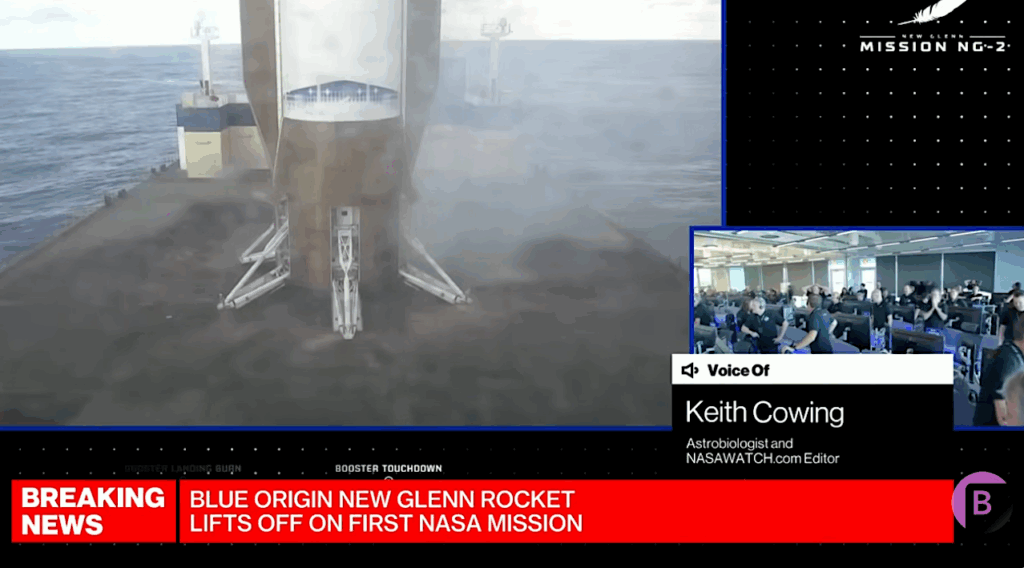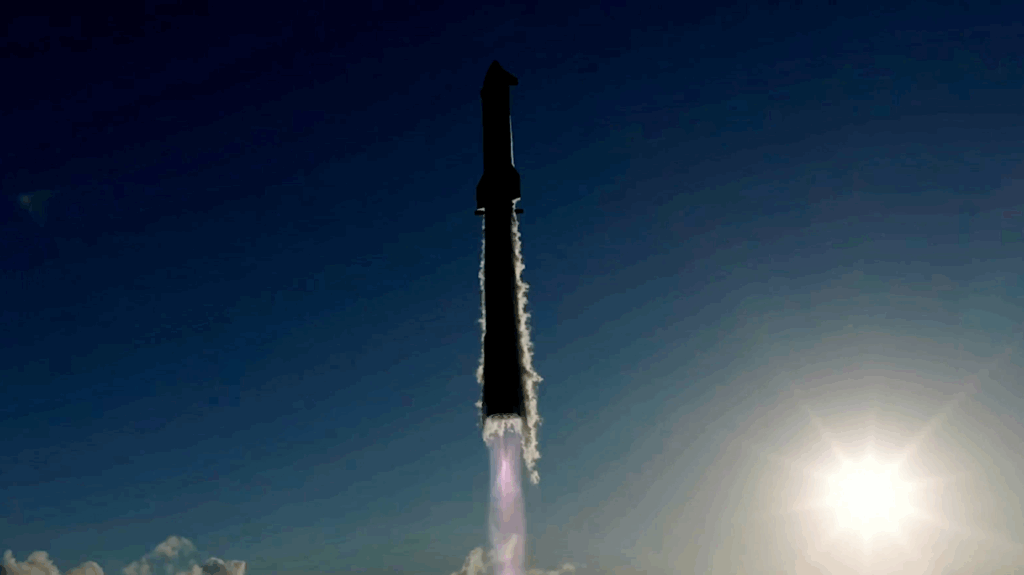NASA Valkyrie R5 Robot Will Compete – But Only Against Itself (Update)

Northeastern puts NASA’s Valkyrie space robots through its paces, TechCrunch (video)
 Keith’s update: At one point in this video Valkyrie stumbles and requires the cables to catch her – unlike the Boston Dynamics robots that can do just about anything and retain perfect balance and run around, jump, etc. But yes, I said “her”. Despite NASA JSC PAO’s reversal and subsequent stern denial about this NOT being a female-inspired robot, the robot at Northeastern is referred to by the student in this film as “she” and “her” dozens of times. See “NASA JSC Has Developed A Girl Robot in Secret (Revised With NASA Responses)“ Question 7.
Keith’s update: At one point in this video Valkyrie stumbles and requires the cables to catch her – unlike the Boston Dynamics robots that can do just about anything and retain perfect balance and run around, jump, etc. But yes, I said “her”. Despite NASA JSC PAO’s reversal and subsequent stern denial about this NOT being a female-inspired robot, the robot at Northeastern is referred to by the student in this film as “she” and “her” dozens of times. See “NASA JSC Has Developed A Girl Robot in Secret (Revised With NASA Responses)“ Question 7.
This Valkyrie R5 humanoid robot is put to the test with Mars colonization on the horizon, Fox
“NASA reportedly produced three other R5 models. One was held in-house, and NASA “awarded two as research loans to Northeastern University and nearby MIT, while a fourth was acquired by Scotland’s University of Edinburgh. According to NASA, in the finalist round, “each team’s R5 will be challenged with resolving the aftermath of a dust storm that has damaged a Martian habitat. This involves three objectives: aligning a communications dish, repairing a solar array, and fixing a habitat leak.”
 Keith’s note: Unfortunately, despite the best efforts of these two college teams to fix NASA’s broken Valkyrie R5 robot it cannot walk by itself and needs to be held up by straps. And one R5 will be competing against another R5 – not against other robots. The last time NASA’s R5 competed with other agency’s droids NASA came in last place. Meanwhile, check out the dancing, hopping, running droids – without tethers – at Boston Dynamics. These commercial products are much more sophisticated – and NASA could buy them – but then what would Ellen Ochoa’s JS robotics hobby shop do?
Keith’s note: Unfortunately, despite the best efforts of these two college teams to fix NASA’s broken Valkyrie R5 robot it cannot walk by itself and needs to be held up by straps. And one R5 will be competing against another R5 – not against other robots. The last time NASA’s R5 competed with other agency’s droids NASA came in last place. Meanwhile, check out the dancing, hopping, running droids – without tethers – at Boston Dynamics. These commercial products are much more sophisticated – and NASA could buy them – but then what would Ellen Ochoa’s JS robotics hobby shop do?
– The Robot NASA Should Buy To Replace Broken Valkyrie, earlier post
– Hey NASA: This Is The Droid You Were Looking For, earlier post
– The Droid That NASA Should Be Sending To Mars, earlier post
– Previous R5 postings









“,,,please fix me,,,” Thanks for the laugh, Keith. These days, it was sorely needed.
That’s a good question, but it could go either way. Boston Dynamics isn’t designing robots for a space environment, so they have an advantage over NASA designs. But NASA designs hardware for a near certainty of working in space. It would be interesting to see what sort of robots someone could build, if the goal was fair but not fantastic reliability in space. It would be lower preference than the BD robots but probably much higher preference than those R5s.
Both Boston Dynamics and NASA are designing bipedal robots to ambulate on Earth, in one gravity; that’s the major hurdle. The need to operate potentially in vacuum or with on-board batteries is a design consideration however it is decidedly secondary. The Moon and Mars are the only space locations under consideration right now and it isn’t clear that bipedal amblation makes sense in either environment.
In weightlessness outside the spacecraft legs aren’t needed, nor is humanoid appearance. Robots are essentially an anchor point, a jointed arm, an end effector and an array of cameras, i.e. Canadarm or Dextre.
On Mars some sort of movement is needed but legs are not necessarily the best approach. In my opinion it would make more sense to stick with the far more energy-efficient and stable six-wheeled chassis used for Curiosity and work on arms, end effectors and artificial intelligence.
On Earth BD’s combination of legs and wheels is impressive. We shouldn’t ignore evolved animal structures, but we should not be bound to them either.
Those objective sounds very much like they’re script from “The Martian.” What’s the next test? Collect human waste and grow potatoes in it?
Well, yes. They wanted tasks for the robot which sounded exciting and which would engage the public. Activities featured in a popular movie would be an obvious choice. Of course, they should have picked activities needed for a planned mission. But since NASA plans are a bit vague, that isn’t really an option. So it looks like they went with cool stuff from a movie.
A big question would be how much on-board power the Valkyrie needs compared to something like a Boston Dynamics robot. The latter can be kind of power-hungry (think multiple kilowatts just for movement). Power constraints are a big deal for any rover on another planet.
Good point, but wheels use less power than legs, and go faster. neither is needed on 0-G, and robots don’t need to fit a human pressure suit for eva. Power requirements might constrain a final design, but the long pole is optimizing structural configuration and for most designs using legs, balance and locomotion.
Keith,
A “hobby shop” in JSC Engineering? Impossible! I never heard of such a crazy notion. 😉
A few serious comments: Space environmental requirements may be a driver in Valkyrie’s problems, as other commenters have mentioned. Without knowing the full set of requirements for two robots it is hard to judge if one is a “better” design than the other. A fascinating question: Are JSC robotic designers constrained by Ochoa and others to design to human analog configs, to be compatible with astronaut tools and tasks, or are they given free rein?
I have read that human analog design was mandated to allow the robot to use the same tools as a human. This seems illogical as most tools designed for humans can be implemented in a much simpler manner for a robot.
Also, most tools designed for humans are designed for the the human _hand_. There aren’t many designed for the foot or elbow. Wheels for mobility and an arm/hand ought to satisfy that requirement.
Valkyrie is not designed for harsh environments. There nothing in it’s build that would make it work in space.
In other words, nothing in hardware that you couldn’t buy off the shelf from existing commercial robotics vendors ( either mil grade, civil or research grade – all options exist )
Morpheus was another hobby/boondoggle. Their only purpose is just to keep engineers busy and employed while there’s nothing else going on.
Morpheus resulted in quite a bit of technology development for programs like ALHAT.
Also, if won’t give engineers a chance to build something working now and then, you won’t have engineers experienced in building something working.
This seems to be the story of modern NASA, doesn’t it? Build something in-house instead of getting the best industry can provide even when it is clear that industry R&D is actually ahead of NASA, removing the usual excuse that they must develop technology from scratch to meet their requirements.
There is a lot of R&D that would be of practical value to America and that can be done in house at low cost. But it requires that NASA work as a partner with industry and academia, not a competitor, and that line managers be allowed modest discretionary funds to develop and demonstrate concepts, and equally important, to continue those projects that have real promise rather than having to start over with new TRL-1 proposals every year. What undermines partnership is the fact that anything that gets funds has to be revolutionary and disruptive, not simply a practical step forward that might improve our lives. Space warp? Why not? A better fuel tank for light aircraft, cheap to manufacture and crash resistant? Too dull, and we’re not in the business of paying industry to do what they could already do,